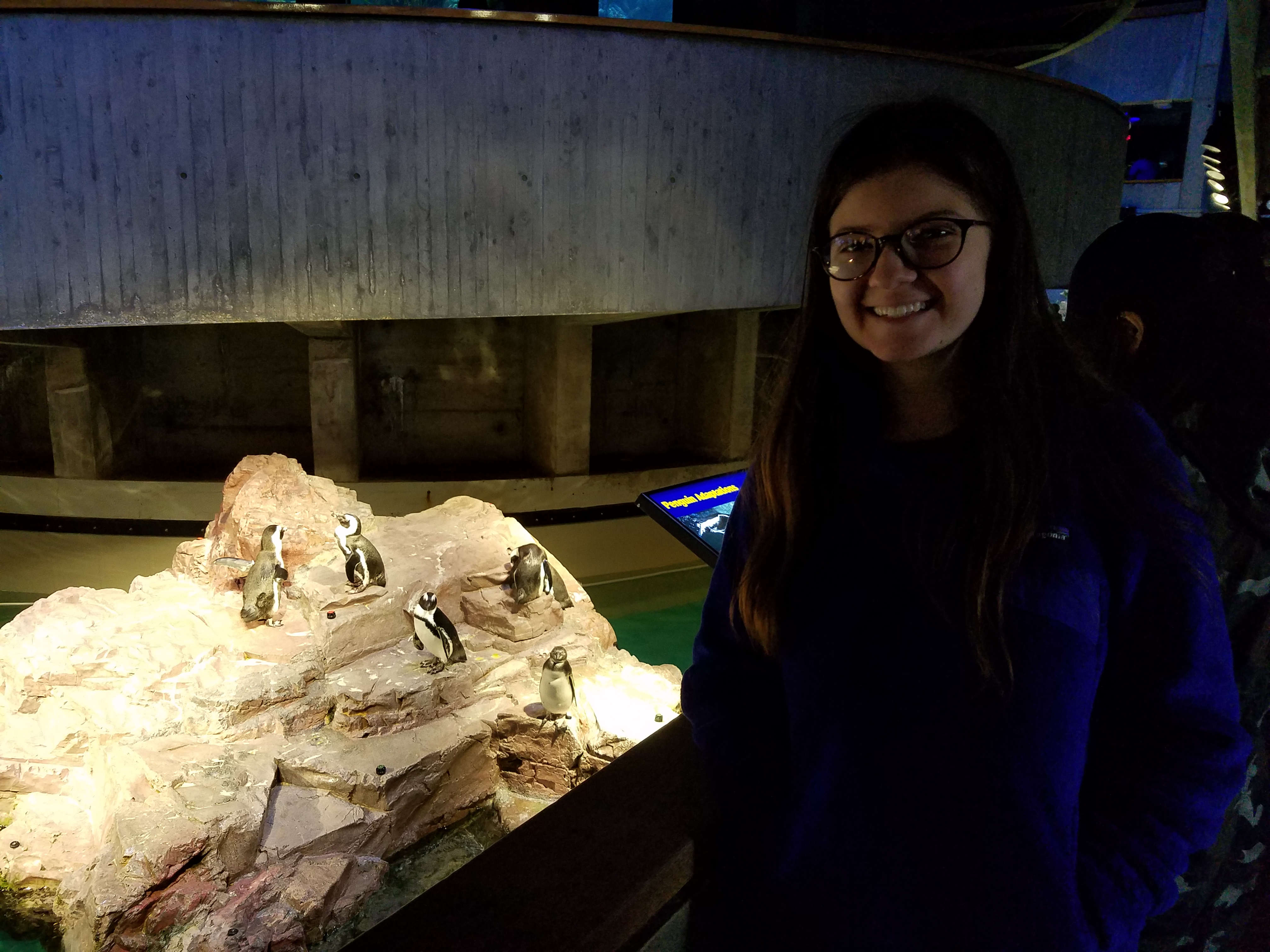
Penguins like the little guys behind Emma can also be harmed when overfishing reduces stocks of their prey species.
Sophia Domingo
The New England Aquarium (NEAq) is committed to marine animal conservation and public education of environmental issues. According to its website, it is the only cultural institution in Boston “with a mission focused primarily on the environment, promoting the importance of protecting the blue planet through innovative exhibits and educational programs”. NEAq places a large emphasis on environmental sustainability in the seafood industry. One of the main species currently at risk is the Southern Bluefin tuna. Over the last 36 years, their population has decreased by 85%. In addition, more than 80% of global fish stocks are being caught at or above their sustainable limit. In many of the information plaques, there is a section entitled “You can help”, which shows visitors ways in which they can make a difference, with links to websites with more information. With “ocean-friendly” recipes and more sustainable species substitutes, they encourage people to make informed decisions and consume species that are abundant and sustainably sourced. If people actively follow these suggestions, they can change the demand and shift the market, allowing species to recover.
In 2000, the aquarium launched an initiative called the Sustainable Seafood Program. They created an advisory program for restaurants and seafood companies that uses science-based species evaluations to make recommendations and encourage them to purchase from well managed fisheries where habitats are minimally impacted, or from fishermen committed to maintaining healthy fish populations and reducing bycatch. In addition, they have partnered with the Consortium for Wildlife Bycatch Reduction to identify practical bycatch reduction solutions. Every year, at least 7.3 million tons of marine life are caught accidentally. The Consortium believes that a “science-industry partnership” is the most effective way to identify issues and solutions in fishing practices. Overall, the NEAq’s partnerships and initiatives have shown their commitment to protection and education rather than just making money off of “charismatic megafauna”. It is important that visitors recognize this and make an effort to decrease their impact on the marine environment.
The New England Aquarium is committed to engaging with the private sector to address issues of fishing sustainability. Though a change in fishing practices is not a panacea for all ocean related issues, information on fishing was omnipresent at the aquarium, reflecting its importance. In the stingray exhibit, a panel titled, “Massive Migration” focused on cownose rays. These rays are known for their mass migrations along the east coast of North America. Unfortunately, bycatch is a major issue for stingrays. To address this issue, the aquarium has been working to investigate fishing methods that have the potential to reduce bycatch. Bycatch effects several other marine animals as well, such as sharks. As mentioned in the shark exhibit, humans kill roughly 100 million to 200 million sharks globally, with bycatch being a major contributor.
Since 2000, the aquarium has been working with the seafood industry to encourage sustainable fishing. Through the Sustainable Seafood Program, the aquarium engages stakeholders and makes scientific recommendations to seafood companies to help the sector in purchasing seafood from well-managed fisheries with low bycatch rates. Furthermore, a major element to the aquarium’s sustainable fishing program is public awareness. Though efforts can be made to advocate for sustainable fishing of profitable “tigers of the sea” such as Bluefin tuna, public decrease in demand is a driver behind market change.
The New England Aquarium has done commendable work for sustainable fishing advocacy and action, through public awareness and work with seafood companies. However, the aquarium still faces the challenge of sparking public action once visitors leave the aquarium. It is one thing to visit a museum and learn about sustainable fishing, and it is another to take the next steps to do something about it. Sparking tangible change in consumption behavior is the next step for sustainable fishing.

Though this split color is rare, Maine lobsters are not. The fishery is well managed, and lobster don’t have a lot of competition these days.

